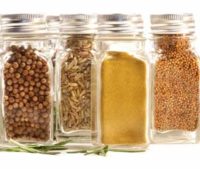FDA Releases Draft Risk Profile on Pathogens and Filth in Spices, Seeks Industry Comments

The U.S. Food and Drug Administration (FDA) has completed a draft risk profile on pathogens and filth in spices. A risk profile is a science-based document that describes the current state of knowledge related to a specific food safety issue, describes mitigation and control mechanisms currently available and identifies critical knowledge gaps. The risk profile was initiated in response to recent outbreaks of human illness caused by the consumption of Salmonella-contaminated spices in the United States.
Editor's note: An Oct. 30 article in the New York Times reported that "about 12 percent of spices brought to the United States are contaminated with insect parts, whole insects, rodent hairs and other things" and "nearly 7 percent of spice imports examined by federal inspectors were contaminated with salmonella" were among the findings in the FDA's risk profile.
The FDA's risk profile identifies the most commonly occurring microbial hazards and filth in spices and quantifies, where possible, the prevalence and levels of these adulterants at different points along the supply chain. It also identifies potential sources of contamination throughout the farm-to-table food safety continuum and evaluates the efficacy of current mitigation and control options designed to reduce the public health risk posed by consumption of contaminated spices in the United States. Potential new mitigation and control options are described, based on the scientific data, information and analyses in the report. The report concludes with a list of knowledge gaps and the research needed to fill them. The FDA seeks comments on this draft document, which can be submitted via the Federal Register.
The study’s findings suggest that the presence of pathogens, such as Salmonella, and filth in spices is a systemic challenge. Failures identified in the farm-to-table food safety system potentially leading to adulteration of consumed spice generally arose from poor/inconsistent application of appropriate preventive controls. The study identified 14 spice/seasoning-associated outbreaks worldwide that occurred from 1973 to 2010, resulting in less than 2,000 reported human illnesses and 128 hospitalizations worldwide.
The relatively small number of outbreaks identified may be attributable in part to the application of preventive controls by the spice and food manufacturing industries, including pathogen reduction treatments, and cooking during food preparation. People’s tendency to eat small amounts of spices with meals generally lowers the probability of illness from contaminated spices relative to similarly contaminated foods consumed in larger amounts. It is also possible that illnesses caused by contaminated spices are underreported, particularly because of challenges related to attribution for minor ingredients in multi-ingredient foods.
The FDA has a number of regulatory standards and programs in place that help prevent contaminated spice from reaching consumers and these are described in the risk profile. In addition, the agency is taking steps to further strengthen spice safety. The FDA has increased inspections of spice manufacturing facilities in recent years and has begun to implement some of the options presented in the risk profile.
For example, the agency’s Center for Food Safety and Applied Nutrition is working with several partners to develop a training center focused on supply chain management for spices and botanical ingredients. As part of this program, FDA experts have provided food safety training in India, a leading country of origin for U.S. spice importation.
Furthermore, through the FDA Food Safety Modernization Act (FSMA), the FDA has proposed a new rule on preventive controls for human food facilities and another on foreign supplier verification programs for importers. The preventive controls rule proposes to require food facilities to put into place preventive controls for those hazards identified by the manufacturer as reasonably likely to occur. The foreign supplier verification rule proposes to require that importers verify that the foods they import are produced using processes and procedures that ensure the same level of safety as food produced in the United States. Both rules hold the potential to improve spice safety. (More information on the proposed rules can be obtained at www.fda.gov/fsma.)
The risk profile is available today and can be read in its entirety on the FDA web site. To submit comments for use in the risk profile or to obtain additional information on the study, please visit the agency’s project web page project web page, where a link to the Federal Register notice is posted.
Looking for a reprint of this article?
From high-res PDFs to custom plaques, order your copy today!




